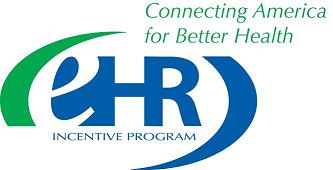 Dissecting Stage 2 of EHR Adoption
Dissecting Stage 2 of EHR Adoption
The CMS Medicare and Medicaid Programs; Electronic Health Record Incentive Program–Stage 2 final rule outlines the path for meaningful use for eligible professionals and eligible hospitals in both the Medicare and Medicaid programs. Even though the States are the administrators of the Medicaid programs, they must work within the framework established in the final rules. There are important changes to the Medicaid EHR Incentive Program for stage 2.
Medicaid patient volume calculations
For a provider to determine their eligibility in a the Medicaid EHR Incentive program, they must first meet a patient volume threshold. In stage 1. Medicaid encounters were either pay those who paid for all or part of the service, or those who paid for all or part of the premium, deductible, or coinsurance for the encounter. In the new rule, Medicaid encounters are those patients that are enrolled in their State’s Medicaid program at the time of the service without any payment liability. These programs can be either the State’s fee-for-service (FFS) programs or the State’s Medicaid managed care programs. CMS states that “this change affecting the Medicaid patient volume calculation is applicable to all eligible providers, regardless of the stage of the Medicaid EHR Incentive Program they are participating in. Read the CMS FAQ.
CHIP patients and Medicaid patient volume
In Stage 1, only patients from CHIP programs created under a Medicaid expansion via Title 19 were considered in patient volumes. In the new rule, State CHIP programs which are part of a Medicaid expansion under Title 19 or Title 21 can be used in patient volumes. Excluded are those from standalone CHIP programs created under Title 21. CMS states that “this change affecting the Medicaid patient volume calculation is applicable to all eligible providers, regardless of the stage of the Medicaid EHR Incentive Program they are participating in. Read the CMS FAQ.
Hospital base year and incentive payment calculation
In stage 1, a hospital base year was calculated by a 12-month period ending in the Federal fiscal year before the hospital’s fiscal year serving as their first payment year. In the new rule, hospitals that begin participation in 2013 or later will use the most recent continuous 12 month period that data is available prior to the payment year. Read the CMS FAQ.
Zero-pay claims
These services can be included in patient volume calculations if the patient is enrolled in Medicaid. Zero-pay claims include:
- Claim denied because the Medicaid beneficiary has maxed out the service limit
- Claim denied because the service wasn’t covered under the State’s Medicaid program
- Claim paid at $0 because another payer’s payment exceeded the Medicaid payment
- Claim denied because claim wasn’t submitted timely
Children’s Hospitals
In stage 1 a requirement for eligibility was having a CMS certification number. This has been changed and at least 12 additional children’s hospitals will be eligible to participate in the Medicaid EHR Incentive program.
